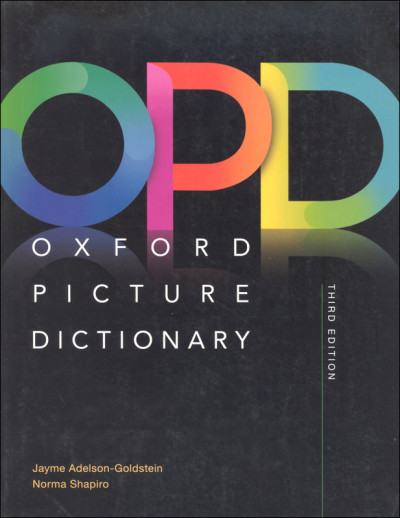We use cookies to make your experience better. To comply with the new e-Privacy directive, we need to ask for your consent to set the cookies. Learn more.
Oxford Picture Dictionary: Monolingual Dictionary 3rd Edition (English Language Teaching)
The third edition of the best selling Oxford Picture Dictionary provides unparalleled support for vocabulary teaching to meet the needs of today's English language learners.
4,000 English words and phrases with meaningful, real life contexts presented within 12 thematic units, including Everyday Language, People, Housing, Food, and Recreation
New and updated topics such as job search, career planning, and digital literacy equip students with the language they need for everyday success.
Revised practice activities prepare students for work, academic study, and citizenship from the very beginning.
Pre-reading questions build students' previewing and predicting skills
High interest reading promote literacy skills
Post reading questions support critical thinking and textual analysis.
If you need to concentrate on spelling and vocabulary, focusing on the most crucial words you'll need for daily living, this is your series. Suitable for pictorial learners, life-skill focused students, English Language Learners, and more, the hub of the learning is the 3rd edition Picture Dictionary (OPD). This edition has an added career focus, digital literacy concepts, academic and citizenship language and activities. It is recommended that instructors also select a corresponding, leveled, student workbook for practice. Words are organized by topic and shown in real-life context. A bottom-page insert provides application: talking points, as well as role-play activities for individuals, partners, or class use. Strongly emphasizing nouns, the lessons focus upon everyday vocabulary use: in education and recreation; families and community; job search and workplace; home and food; clothing and health.
The over 4,000 strategically selected high-frequency words come from two sources: the Oxford 3000™ (prioritized for their importance and usefulness) and The Academic Word List (AWL) which spans multiple academic disciplines. The in-depth index indicates the page on which the word is introduced and is included in an exercise. Verbs are indicated in bold type, but you'll find an expansive list of regular verbs and irregular verbs. A few additional printable resources are available by registering with the publisher, but the mentioned Online Teacher Resource Center is not available for individual or home use.
Implement the OPD vocabulary using one of the correlating, leveled workbooks. Select from Low Beginning, High Beginning, or Low Intermediate. These levels correlate to students based on their "grasp of English" ability rather than a grade level. Activities will apply the target words: primarily fill-in-the-blank, but also box-checking, circling, and more. The Low Beginning requires approximately a Grade 4 language ability, and each section includes one short, concrete Challenge Activity (Name two types of materials you like to wear). You'll see some vocabulary overlap in the next level, High Beginning, but the challenge takes a step up, becoming more complex in composing and thinking skill application (with the final, Low Intermediate level requiring the most reading and writing tasks at about a 7th grade level). Longer length Challenge Activities are on every couple of pages, and require higher-level critical thinking and composing (for High Beginning: List 8 items of clothing you have. For Low Intermediate: What do you like to wear in different weather conditions? Write short paragraphs like the example.). The workbooks' tight correlation with the OPD helps teachers grade the activities since no direct answers are provided. Have students at varied levels? Each workbook handles the same vocabulary words in the same order; simply align all 3 workbooks by page number. This connection allows students to learn the same words while engaging in ability-targeted activities. Because there is a substantial content overlap in the workbook series, it opens up the possibility for multi-level conversations. To review and provide more depth, a student completing one level can move to the next workbook, reusing the OPD. ~ Ruth
| Product Format: | Paperback |
|---|---|
| Brand: | Oxford University Press |
| Grades: | 4-AD |
| ISBN: | 9780194505291 |
| Length in Inches: | 11 |
| Width in Inches: | 8.5 |
| Height in Inches: | 0.5 |
| Weight in Pounds: | 1.65 |

